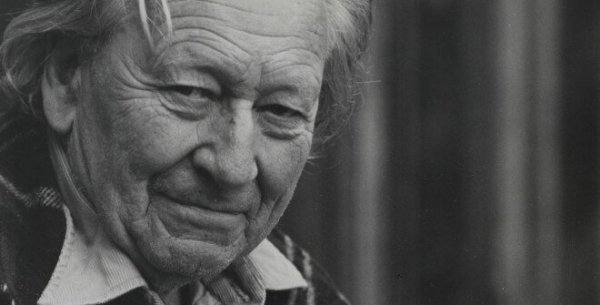Everything You Need To Know About Systemic Therapy

Systemic therapy has its roots in family therapy, although these days it doesn’t need a family focus to be called systemic. With this approach, what’s important is the relationship: the process of interaction between people and not so much observation of the isolated individual.
It was the Austrian biologist and philosopher Ludwind Von Bertalanffy who formulated the General Systems Theory in 1968. He used the concept of system as “a network of elements in interaction”. Later on he applied it to the therapeutic framework until it became the predominant model in research into families and relationships.
However, the systemic perspective is also fed by contributions from other disciplines. These are mainly in relation to the theoretical field. Some of them are cybernetics, pragmatic developments in communication and family psychotherapy. This integration of perspectives has allowed the development of a wide scope of application ranging from individual to group treatments, couples and families (Hoffman, 1987).
The concept of system
The meeting point of the different approaches is the concept of system. It follows that the whole is greater than the sum of the parts. This means that from the systemic approach, emphasis is placed on the properties of the whole that result from the interaction of the different elements of the system. In general terms, the important thing is the relationship that emerges from the interaction between people.
Systemic psychologists adopt the following general idea. A system, whatever it may be — family, couple or social — comprises one or more elements linked together in such a way that a change in the state will follow another system change. This enables researchers to see fundamental aspects of the individual pathology of any of members of the system.
Background of Systemic Therapy
The most outstanding predecessors of systemic therapies comes from psychoanalysis. Examples of these are the terms “schizophrenogenic mother“ by Frieda From-Reichman and “perverse mother” by Rosen, or the use of Bell’s family interviews.
That said, the clearest beginnings of systemic therapy arose with anthropologist Gregory Bateson and his team of veterans in the Hospital of Palo Alto. Bateson joined other researchers such as Jackson, Haley and Weakland to analyze the communication system in schizophrenic families.

Gregory Bateson
One of the most interesting theories that emerged from his research was the theory of double bind. This theory explains how the contradiction between messages can cause delirium as an escape from reality. The contradiction implies receiving two orders where fulfilling one implies disobeying the other. One example would be to say, “Be more spontaneous” or “Do not be obedient”.
In parallel, in 1962 Jackson and Ackerman founded the magazine Family Process and Bertalanffy formulated the General Systems Theory. The latter was the theory that develops factors common to all systemic therapies.
Common aspects of systemic therapy
Although the systemic therapies are very broad and encompass a large group of disciplines, there are some aspects they all have in common. The most important one is the concept of system that we already mentioned as “a set of objects or elements that are related to each other”.
In his General Theory of Systems, Bertalanffy also highlighted the concept of interaction. He said a system implies interdependence between the parties. He also said each part of system can be considered a subsystem. This is how the family can be the system and the relationship between mother and child the subsystem.
Open and closed systems
It is also important to differentiate between open and closed systems. In this, however, researchers don’t agree on the criteria. If we follow Bertanlaffy’s conceptualization, a closed system is one that doesn’t make any exchange with the medium. In contrast, an open system is in constant communication with the medium or other systems.
For example, closed family systems do not maintain any type of communication with their environment. The final state depends on the initial conditions of the system. There is an impoverishment of progressive energy in the union and family system.

From this observation, authors such as Watzlawick, Beavin and Jackon from the school of Palo Alto give us “The Theory of Human Communication”, using the results of the study of other concepts taken from the General Theory of Systems.
Systemic models
This theory provides aspects and ideas common to all systemic models such as:
- It is impossible not to communicate. This theory is based on the idea that all behavior is communication, including silence. In addition, it considers that it is possible to have situations in which the “symptom” itself is the form of communication.
- The mechanisms of the systems are self-regulated by feedback.
- There are two levels of communication: the digital or content level and the analog or relational level . If there is incongruence between the two levels, then paradoxical messages appear.
- The interaction is conditioned by the ratings that the participants introduce. This means that, depending on the version we build of what we see and experience, we will decide the relationship we’ll have with other people and vice versa. So the lack of agreement on how to rate the facts is the cause of many conflicts in relationships.
- There is a system of rules that the systemic therapist must know: the recognized rules, the symmetrical rules, the secret rules and the target rules.
Even so each systemic school also has a series of peculiarities. Let’s look at some of them in greater depth.
MRI Interactional School: Watzlawick, Wakland and Fisch
This systemic school is identified with the second generation of Palo Alto researchers (Watzlawick, Weakland & Fisch, 1974, Fisch, Weakland & Segal, 1982).
Some of the maxims of this school are:
- The solutions tried are those that maintain the problems. This means that when a person does something to remedy a situation he often only manages to maintain it.
- The interventions are aimed at identifying the circuits that intervene in the relationship and the solutions tried. The objective is to modify the interactional patterns, which is known as Change 2, since the attempted failed solutions are Change 1 or “more of the same”.
- One of the strategies used are paradoxical interventions. That is, to prescribe tasks or communicate ideas far away from the common system, but in agreement with the framework of the system. To do so, he “speaks the language of the patient”.

Paul Watzlawick
Structural and strategic school: Minuchin and Haley
Minuchin and Haley are the main representatives of this school. They believe it is essential to analyze the structure of the system in order to know the type of relationships that its members have and thus apply the necessary treatment. Both of them state that families organize around alliances and coalitions.
For example, an alliance is defined by the proximity of two members in contrast to a more distant third. But a coalition consists of the union of two members against a third. The coalitions of different generations are called perverse triangles (the mother and the son against the father).
From this perspective, the therapist uses techniques to modify the family structure. In this way he challenges the definitions of the family and carries out a positive redefinition of the symptom.
They also opt for the prescription of tasks to certain members of the family. In this the therapist is allied with a subsystem, in order to provoke a restructuring of limits or the paradoxical interventions of Haley.
System school of Milan: Selvini-Palazzoli, psychosis in the family
This school arises from the works of Mara Selvini-Palazzoli and her team.
They focus on disorders such as anorexia or psychotic disorders, which usually arise in families of rigid transaction. The systemic school in Milan gives special attention to the data collected from the moment of referral and the first contact.
From there, they build a working hypothesis that they contrast in the development of the first session. They work mainly with the meanings of the family in relation to the symptom. They also work with the identified patient with the aim of finding consensus and dissenting.
One of the interventions created by this school is invariable prescription. This is a specific program to work with psychotic families that consists of giving the same task to the whole family, trying to ally the parents using a secret, one which favors the separation of the subsystems, especially the one formed by the children.
Systemic therapies offer another perspective of our problems and difficulties. It is a perspective that prioritizes relationships over the individual in order to help improve people’s lives. It is an unusual and interesting method that is becoming increasingly important in this area of therapy.
Systemic therapy has its roots in family therapy, although these days it doesn’t need a family focus to be called systemic. With this approach, what’s important is the relationship: the process of interaction between people and not so much observation of the isolated individual.
It was the Austrian biologist and philosopher Ludwind Von Bertalanffy who formulated the General Systems Theory in 1968. He used the concept of system as “a network of elements in interaction”. Later on he applied it to the therapeutic framework until it became the predominant model in research into families and relationships.
However, the systemic perspective is also fed by contributions from other disciplines. These are mainly in relation to the theoretical field. Some of them are cybernetics, pragmatic developments in communication and family psychotherapy. This integration of perspectives has allowed the development of a wide scope of application ranging from individual to group treatments, couples and families (Hoffman, 1987).
The concept of system
The meeting point of the different approaches is the concept of system. It follows that the whole is greater than the sum of the parts. This means that from the systemic approach, emphasis is placed on the properties of the whole that result from the interaction of the different elements of the system. In general terms, the important thing is the relationship that emerges from the interaction between people.
Systemic psychologists adopt the following general idea. A system, whatever it may be — family, couple or social — comprises one or more elements linked together in such a way that a change in the state will follow another system change. This enables researchers to see fundamental aspects of the individual pathology of any of members of the system.
Background of Systemic Therapy
The most outstanding predecessors of systemic therapies comes from psychoanalysis. Examples of these are the terms “schizophrenogenic mother“ by Frieda From-Reichman and “perverse mother” by Rosen, or the use of Bell’s family interviews.
That said, the clearest beginnings of systemic therapy arose with anthropologist Gregory Bateson and his team of veterans in the Hospital of Palo Alto. Bateson joined other researchers such as Jackson, Haley and Weakland to analyze the communication system in schizophrenic families.

Gregory Bateson
One of the most interesting theories that emerged from his research was the theory of double bind. This theory explains how the contradiction between messages can cause delirium as an escape from reality. The contradiction implies receiving two orders where fulfilling one implies disobeying the other. One example would be to say, “Be more spontaneous” or “Do not be obedient”.
In parallel, in 1962 Jackson and Ackerman founded the magazine Family Process and Bertalanffy formulated the General Systems Theory. The latter was the theory that develops factors common to all systemic therapies.
Common aspects of systemic therapy
Although the systemic therapies are very broad and encompass a large group of disciplines, there are some aspects they all have in common. The most important one is the concept of system that we already mentioned as “a set of objects or elements that are related to each other”.
In his General Theory of Systems, Bertalanffy also highlighted the concept of interaction. He said a system implies interdependence between the parties. He also said each part of system can be considered a subsystem. This is how the family can be the system and the relationship between mother and child the subsystem.
Open and closed systems
It is also important to differentiate between open and closed systems. In this, however, researchers don’t agree on the criteria. If we follow Bertanlaffy’s conceptualization, a closed system is one that doesn’t make any exchange with the medium. In contrast, an open system is in constant communication with the medium or other systems.
For example, closed family systems do not maintain any type of communication with their environment. The final state depends on the initial conditions of the system. There is an impoverishment of progressive energy in the union and family system.

From this observation, authors such as Watzlawick, Beavin and Jackon from the school of Palo Alto give us “The Theory of Human Communication”, using the results of the study of other concepts taken from the General Theory of Systems.
Systemic models
This theory provides aspects and ideas common to all systemic models such as:
- It is impossible not to communicate. This theory is based on the idea that all behavior is communication, including silence. In addition, it considers that it is possible to have situations in which the “symptom” itself is the form of communication.
- The mechanisms of the systems are self-regulated by feedback.
- There are two levels of communication: the digital or content level and the analog or relational level . If there is incongruence between the two levels, then paradoxical messages appear.
- The interaction is conditioned by the ratings that the participants introduce. This means that, depending on the version we build of what we see and experience, we will decide the relationship we’ll have with other people and vice versa. So the lack of agreement on how to rate the facts is the cause of many conflicts in relationships.
- There is a system of rules that the systemic therapist must know: the recognized rules, the symmetrical rules, the secret rules and the target rules.
Even so each systemic school also has a series of peculiarities. Let’s look at some of them in greater depth.
MRI Interactional School: Watzlawick, Wakland and Fisch
This systemic school is identified with the second generation of Palo Alto researchers (Watzlawick, Weakland & Fisch, 1974, Fisch, Weakland & Segal, 1982).
Some of the maxims of this school are:
- The solutions tried are those that maintain the problems. This means that when a person does something to remedy a situation he often only manages to maintain it.
- The interventions are aimed at identifying the circuits that intervene in the relationship and the solutions tried. The objective is to modify the interactional patterns, which is known as Change 2, since the attempted failed solutions are Change 1 or “more of the same”.
- One of the strategies used are paradoxical interventions. That is, to prescribe tasks or communicate ideas far away from the common system, but in agreement with the framework of the system. To do so, he “speaks the language of the patient”.

Paul Watzlawick
Structural and strategic school: Minuchin and Haley
Minuchin and Haley are the main representatives of this school. They believe it is essential to analyze the structure of the system in order to know the type of relationships that its members have and thus apply the necessary treatment. Both of them state that families organize around alliances and coalitions.
For example, an alliance is defined by the proximity of two members in contrast to a more distant third. But a coalition consists of the union of two members against a third. The coalitions of different generations are called perverse triangles (the mother and the son against the father).
From this perspective, the therapist uses techniques to modify the family structure. In this way he challenges the definitions of the family and carries out a positive redefinition of the symptom.
They also opt for the prescription of tasks to certain members of the family. In this the therapist is allied with a subsystem, in order to provoke a restructuring of limits or the paradoxical interventions of Haley.
System school of Milan: Selvini-Palazzoli, psychosis in the family
This school arises from the works of Mara Selvini-Palazzoli and her team.
They focus on disorders such as anorexia or psychotic disorders, which usually arise in families of rigid transaction. The systemic school in Milan gives special attention to the data collected from the moment of referral and the first contact.
From there, they build a working hypothesis that they contrast in the development of the first session. They work mainly with the meanings of the family in relation to the symptom. They also work with the identified patient with the aim of finding consensus and dissenting.
One of the interventions created by this school is invariable prescription. This is a specific program to work with psychotic families that consists of giving the same task to the whole family, trying to ally the parents using a secret, one which favors the separation of the subsystems, especially the one formed by the children.
Systemic therapies offer another perspective of our problems and difficulties. It is a perspective that prioritizes relationships over the individual in order to help improve people’s lives. It is an unusual and interesting method that is becoming increasingly important in this area of therapy.
All cited sources were thoroughly reviewed by our team to ensure their quality, reliability, currency, and validity. The bibliography of this article was considered reliable and of academic or scientific accuracy.
- Baecker, D. (2017). Teorías sistémicas de la comunicación. Revista Mad, (37), 1-20.
- Beyebach, M. (2016). La Terapia Sistémica Breve como práctica integradora. Manual práctico de terapia sistémica breve. Santiago, Chile: Mediterráneo, 29-67.
- Martínez, F. E. G. (2015). Terapia sistémica breve. RIL editores.
- Zegarra, D. V., & Jesús, Á. P. (2015). Terapia familiar sistémica: una aproximación a la teoría y la práctica clínica. Interacciones: Revista de Avances en Psicología, 1(1), 45-55.
This text is provided for informational purposes only and does not replace consultation with a professional. If in doubt, consult your specialist.







